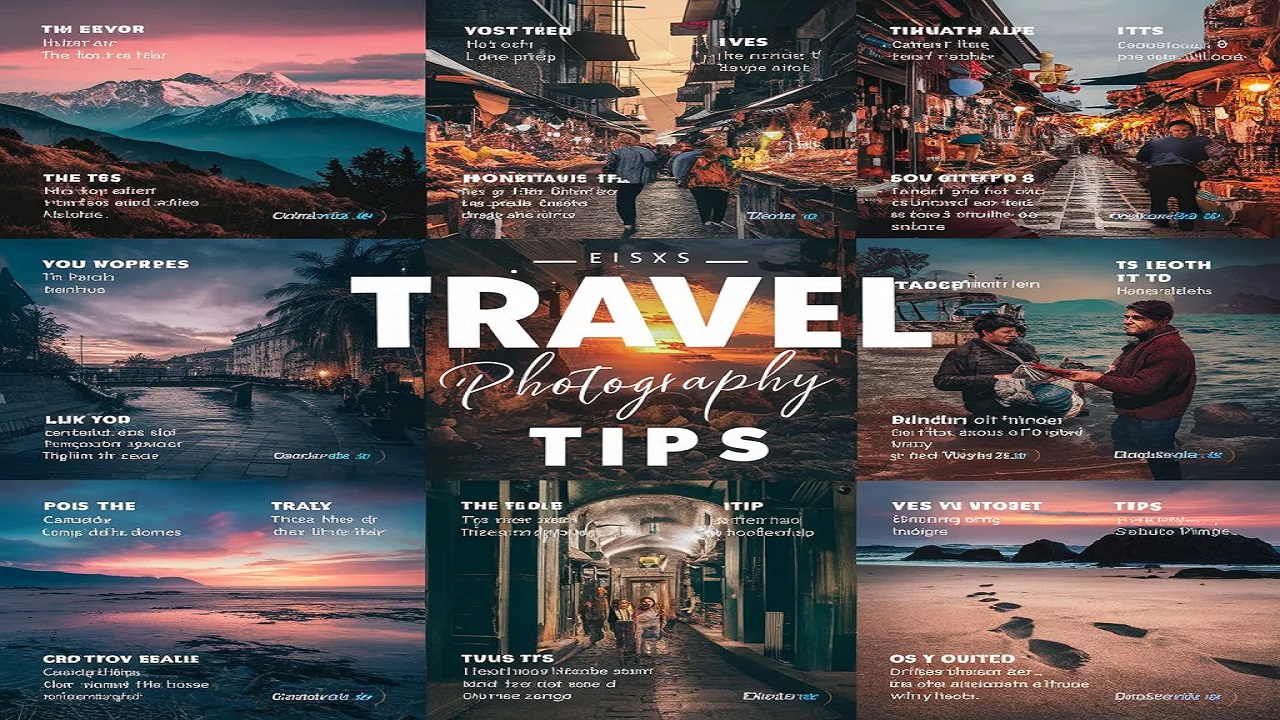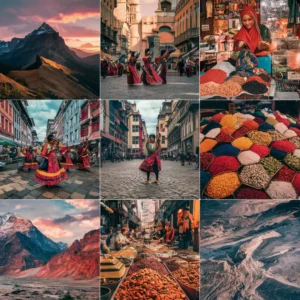
Introduction
Taking stunning travel photos can be a challenge, but with the right tips and techniques, you can capture the essence of your journey and preserve those precious memories forever. In this article, we’ll explore various aspects of travel photography, from understanding the basics to mastering composition, working with natural light, and post-processing your photos. So grab your camera and let’s dive in!
Understanding the Basics of Travel Photography
Before embarking on your photographic adventure, it’s important to understand the fundamentals of travel photography. One crucial aspect is choosing the right equipment that suits your needs and preferences.
Choosing the Right Equipment for Travel Photography
When it comes to travel photography, portability is key. Investing in a lightweight and compact camera will not only make your journey more comfortable but also allow you to be more spontaneous in capturing fleeting moments. Consider a mirrorless or compact DSLR camera that doesn’t compromise on image quality.
In addition to a camera body, it’s essential to have a versatile lens that covers a wide focal range. A zoom lens, such as a 24-70mm or 18-135mm, will enable you to capture various subjects, from wide-angle landscapes to detailed portraits.
Don’t forget to pack extra batteries, memory cards, and a sturdy tripod to ensure you’re always ready to capture that perfect shot.
Importance of Research in Travel Photography
Researching your destination before your trip can greatly enhance your travel photography experience. Learn about the culture, history, and unique landmarks to have a better understanding of what you want to capture.
Identify popular photography spots and create a shot list to ensure you don’t miss any must-see locations. However, don’t be afraid to venture off the beaten path and discover hidden gems that showcase the true essence of the place.
Mastering the Art of Composition
Composition plays a vital role in creating visually captivating travel photographs. It’s all about arranging the elements within your frame to guide the viewer’s eye and tell a story.
Rule of Thirds in Travel Photography
The rule of thirds is a classic composition technique that involves breaking your frame into a 3×3 grid. Place your main subject along the gridlines or at the intersection points to create a dynamic and balanced composition. This technique adds interest and draws attention to your subject.
However, rules are meant to be broken, so don’t limit yourself to the rule of thirds. Experiment with different perspectives and compositions to add variety to your images.
Using Leading Lines to Guide the Viewer
Leading lines are powerful compositional elements that naturally draw the viewer’s eye into the frame. Look for lines in your environment, such as roads, rivers, or pathways, and use them to create depth and guide the viewer’s gaze to your main subject.
Experiment with different angles and perspectives to make the leading lines more prominent in your composition. Whether it’s a winding road or a row of trees, leading lines can add a sense of direction and narrative to your travel photos.

Working with Natural Light
Photography is all about capturing light, and when it comes to travel photography, natural light can be your best friend. Understanding how to utilize different lighting conditions will enable you to capture stunning photos throughout the day.
Golden Hour Photography
The golden hour, which occurs during the first hour after sunrise and the last hour before sunset, is a magical time for capturing travel photos. The soft, warm light during this time adds a beautiful golden glow to your subjects and landscapes.
Make sure to plan your shoots accordingly, as the golden hour is relatively short. During this time, experiment with backlighting, silhouettes, and capturing the sun’s rays bursting through objects to add a touch of enchantment to your photographs.
Overcoming Harsh Midday Light
While the golden hour offers ideal lighting conditions, midday light can be challenging due to its harsh and direct nature. However, with some techniques, you can still capture compelling images.
Consider using natural elements to diffuse the harsh light, such as shooting under the shade of trees or using translucent materials to create soft, diffused lighting. Additionally, embrace the high contrast and experiment with shadow play to create impactful and dramatic compositions.
Capturing the Essence of a Place
Travel photography allows you to document not only the landscapes and architecture but also the local culture and people you encounter. Immersing yourself in the destination and connecting with the locals will enrich your photography and take it to a whole new level.
Incorporating Local Culture in Your Shots
Photographing the local culture is a fantastic way to add depth and authenticity to your travel photos. Engage with the people, participate in their traditions, and capture candid moments that reflect their ways of life.
Whether it’s a bustling market, a traditional ceremony, or a local festival, aim to tell a story through your photographs. Be respectful and seek permission when photographing individuals, and remember that building a connection and trust will result in more genuine and compelling images.
Showcasing Landscapes and Architecture
Every place has its unique landscapes and architectural wonders that deserve to be documented. Experiment with different angles, perspectives, and focal lengths to capture the grandeur and beauty of these locations.
Take the time to appreciate the details—whether it’s the intricate carvings on a historical building or the textures of a breathtaking natural landscape. This attention to detail will allow you to create photographs that transport viewers to those destinations and evoke a sense of wonder.
Post-Processing Travel Photos
Post-processing is an essential part of the photography process, and it allows you to enhance your travel photos to reflect your vision and convey the emotions you experienced during your journey.
Basic Editing Techniques
Start by selecting your best shots and organizing your images in a software of your choice. Adjust the exposure, contrast, and saturation to achieve the desired look while maintaining the authenticity of the scene.
Crop your photos to remove distractions and improve the composition. Experiment with different white balance settings to bring out the true colors of your subject and scene. Lastly, sharpen your images to enhance the details and make them more visually appealing.
Preserving Authenticity in Your Edits
While editing can significantly enhance your travel photos, it’s essential to strike a balance between enhancements and maintaining the authenticity of the scene. Avoid excessive manipulation that alters the original essence of the photograph.
Remember that travel photography is about capturing real moments and sharing the beauty of different destinations. Use editing tools as a means of storytelling and bringing out the best in your images, rather than distorting reality.
Conclusion
Travel photography is a journey in itself, where you not only capture stunning images but also create lasting memories. By understanding the basics, mastering composition, working with natural light, and post-processing your photos, you’ll be well-equipped to capture the essence of each place you visit.
So pack your camera and embark on your photographic adventure, knowing that each click of the shutter is an opportunity to share the beauty and stories of the world through your lens.
FAQs
What camera settings should I use for travel photography?
Use a low ISO for clear images, a moderate aperture (f/8 to f/11) for depth of field, and adjust shutter speed based on lighting conditions.
How do I choose the right lens for travel photography?
A versatile zoom lens (e.g., 24-70mm) is ideal for a variety of shots. Consider a wide-angle lens for landscapes and a prime lens for portraits.
What are the best times of day for travel photography?
Early morning and late afternoon, known as the golden hours, offer the best natural lighting for capturing stunning photos.
How can I keep my camera gear safe while traveling?
Use padded camera bags, avoid exposing your gear to extreme weather, and be mindful of your surroundings to prevent theft.
What composition techniques can improve my travel photos?
Use the rule of thirds, leading lines, framing, and symmetry to create balanced and visually appealing images.






